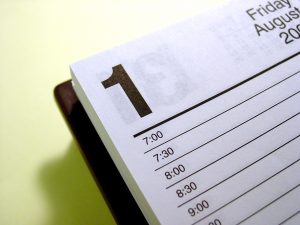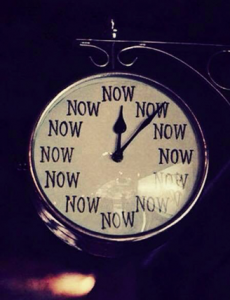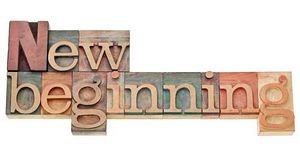 Some of us love change. With each new month we tend to change our clothing, eat different foods and decorate our homes. That’s a lot of work for some of us. How do you remember everything that needs to be done? I use my calendar. Each month reminds me of what needs to be done. Below is a monthly glance at my calendar.
Some of us love change. With each new month we tend to change our clothing, eat different foods and decorate our homes. That’s a lot of work for some of us. How do you remember everything that needs to be done? I use my calendar. Each month reminds me of what needs to be done. Below is a monthly glance at my calendar.
How do you remember?
An easy way to keep up with the changing seasons is to set an event in your calendar for each month and have it notify you. Or, maybe break up things into weekends, starting each Saturday morning with a “things to do list.” I pretty much have it memorized and enjoy the changes that the seasons bring.
Happy autumn to you!
Click on the title above to learn more about the featured author.
 Do you struggle trying to accomplish everything you want to get done in a week? Are you always asking yourself “where does the time go?” Are you always running late for appointments? Instead of trying to keep it all organized in your head, start a time management system for yourself by using a calendar (digital or paper, whatever your preference), a Day-Timer, or even an excel spreadsheet will work.
Do you struggle trying to accomplish everything you want to get done in a week? Are you always asking yourself “where does the time go?” Are you always running late for appointments? Instead of trying to keep it all organized in your head, start a time management system for yourself by using a calendar (digital or paper, whatever your preference), a Day-Timer, or even an excel spreadsheet will work.
Remember school schedules? The week is scheduled by the day, classes with start and end times are filled in first and the remaining time is what you have left for the week. Start with your non-flexible commitments, such as; work, and then plan the other activities or tasks by the days and times available in the space you have left. Block out the amount of time each commitment, task, or activity will take and include travel time if necessary. This will visually put your time available to accomplish your tasks for the week “at a glance” and into perspective. This is imperative for getting a handle on your time management schedule. If there are overlapping commitments and a shortage of time available to get everything accomplished, you know it’s time to reorganize your week.
Keep in mind, you do need to sleep, so only schedule your time during your realistic waking hours. Each day follow your day’s schedule of events to know where you have to be and when. Then when emergencies crop up and they will, you will have a much better handle on where to reschedule the lessor priorities.
Don’t overbook yourself. Be realistic, allow for travel time and most importantly, don’t forget to allow for “down-time”!
Click on the title above to learn more about the featured author.
 These past few weeks, I have been grappling with a kind of spiritual awareness which continues to unearth and challenge the way I perceive life. I find myself reflecting on the way I think and feel, and also upon the actions I do or don’t do.
These past few weeks, I have been grappling with a kind of spiritual awareness which continues to unearth and challenge the way I perceive life. I find myself reflecting on the way I think and feel, and also upon the actions I do or don’t do.
In wanting to explore this new era of enlightenment, I took Eckhart Tolle’s book, The Power of Now off my shelf. Its content is unwaveringly dense, often leaving me exhausted by concepts too thick to conquer. Though the pages have barely been touched, the title, “The Power of Now” remains ever present to me: challenging me, questioning me, and inspiring me.
Life lived NOW means being present to the opportunity of this moment in time. This moment is the opportunity to experience exactly what is happening, and not what I/we should or could be doing…nor the eight tasks work expects done simultaneously and seamlessly. On the other hand, the familiar sentiment, life lived “Someday, One Day” clouds being present to the gifts of now. A “Someday, One Day” attitude often creates log jams and stagnation in our physical, emotional, and spiritual space. Procrastination goes hand-in-hand with life lived from a “Someday, One Day” perspective.
Being present to NOW fosters gratitude, calmness, peace and stillness…much like the breath we are asked to be present to in our meditation or yoga practices. And in this state of NOW, life flows. Action is second-nature; it is real, purposeful, and natural. It is not sabotaged by “Someday, One Day’s” indecisions, doubts and postponements. Lightness, awakenings, and insights are encouraged by the presence of “NOW” thinking. Fear of change, the unknown, or something different, keeps the “Someday, One Day” card in our hip pocket ready to be played when life feels uncomfortable.
Eckhardt Tolle said, “Some changes look negative on the surface but you will soon realize that space is being created in our life for something new to emerge.” I see this played out time and time again in my own life and in the lives of my clients. Taking on “Someday, One Day’s” mantra of “later, later, later” and actually getting started now creates oceans of energy. Physical spaces are transformed uncorking the damned up to-do’s, intentions, goals and aspirations allowing life’s energies to flow again. Frequently, at the end of a session, clients feel lighter, freed up and elated as the stagnate piles and clutter dissolve into organizational bliss.
Eunice S. Carpitella, Executive Coach & Leadership Development Consultant of Transformative Dynamics, said, “LATER” is the enemy to living a fulfilled, satisfying and rewarding life. It’s always convincing you that whatever needs to be done will somehow be improved by waiting.”
Werner Erhard lightened up this dilemma for me saying, “Thinking about ‘it’ leaves you with more thoughts and older.”
Life is passing by and with it, those precious moments of NOW’s gifts. Moments are accumulating into days, months and even years. We yearn to live our dreams, not the reasons why not. “Someday, One Day” is the status quo and “later, later, later” its hypnotic song. Overcoming “later’s” mantra takes motivation, drive, a push, and support fuelled by a vision to let go of “Someday, One Day.”
Bringing order to chaos and freedom and ease to life is what Professional Organizers love to do. Call an organizer when you need a gentle nudge, a kick start, a fresh set of eyes or a partner to drive away the “Someday, One Day” blues.
Cause a life you love, lived joyously in the presence of NOW — moment by moment.
Embrace The Power of NOW!
 Are you in need of a new beginning? The New Year resolutions have faded into the holiday glow, and now is a great time to renew and refresh your home, your space, your life. The best way to begin anew is to plan with intention. According to Deepak Chopra, M.D., Intention is the starting point of every dream. It is the creative power that fulfills all of our needs, whether for money, relationships, spiritual awakening, or love.
Are you in need of a new beginning? The New Year resolutions have faded into the holiday glow, and now is a great time to renew and refresh your home, your space, your life. The best way to begin anew is to plan with intention. According to Deepak Chopra, M.D., Intention is the starting point of every dream. It is the creative power that fulfills all of our needs, whether for money, relationships, spiritual awakening, or love.
Intentions are the bedrock of goals and desires. When planning with intention, you want to come from a place of authenticity. Ask yourself what you genuinely want to achieve. For your intentions to take form, it’s important to set goals.
Goals should be specific and measurable for them to be powerful and effective. That doesn’t mean that your goals must come from a place of stress and guilt, be competitive or full of pressure. Setting measurable goals gives you the clarity that is needed to help manifest tangible outcomes.
Actions support your goals and intentions allow the goals to take form. Creating daily, weekly, and monthly actions is key to achievement and may involve building or changing some habits. Habits require practice to establish or break, and the cessation of action is more about the loss of support and accountability than failure or weakness.
Sometimes we all fall short of our goals. This is when a shift in perspective can help us overcome feelings of defeat. Be kind to yourself, practice focusing on what you have accomplished and allow yourself to make mistakes. Enjoy the process and have fun along the journey.
Click on the title above to learn more about the featured author.
January is National Get Organized Month and it’s also the time for making resolutions and promising to follow through on all the advice in the self-help books on your bookshelves. Being the author of a self-help book, I can’t say I don’t recommend them, but striving to constantly improve your life and your home may not be the best advice.
According to Lindsay Myers on brainblogger.com, self-improvement represents a $10 billion per year industry in the U.S. alone. (In addition to high revenues, self-help has a high recidivism rate, which means that those same people already purchased another self-help book in the last 18 months.) Whether we want to lose weight, eat healthy, have a better marriage, or advance in our career, many of us rely on self-help books to improve our lives.
What’s more, home improvement is an almost $300 billion industry, which some say started with Bob Vila on This Old House and cable channels taking over from there with HGTV and DIY Network. I must admit that we bought our old farm house over 30 years ago and we’ve been improving and upgrading ever since.
Stop Improving Yourself and Start Living by Robert Jean Bryant is a classic self-help book that challenges us to end the perpetual quest for improvement and instead upgrade the quality of our daily lives. We are constantly bombarded by commercials and retailers who try to convince us to buy the latest and greatest stuff so we can “improve” our lives. But all that buying means more clutter, distracts us from the real issues and the real people in our lives, and takes us away from living in the moment. Bryant also says that when you get off the treadmill of constant improvement you help yourself to the freedom of creativity, joy and well-being.
I suggest that we start 2016 by getting back to the basics. Let’s break it down:
Finally, answer the question “I wish I had more time to…” and make it happen. As the saying goes, life is not a dress rehearsal.
Clutter Quote: “Know many, trust few, learn to paddle your own canoe.” Anonymous
 It’s a new year. You want to be your best self. Get organized. Lose weight. Exercise. These are some of the most popular resolutions (goals) year after year. Here’s a reality check: They are all great ideas but they are NOT goals.
It’s a new year. You want to be your best self. Get organized. Lose weight. Exercise. These are some of the most popular resolutions (goals) year after year. Here’s a reality check: They are all great ideas but they are NOT goals.
Why? Because they are too vague. How can you know if you’ve achieved them? What do you want to organize? How much weight do you want to lose? Do what for exercise? What’s the timeframe?
To be successful, remember this SMART acronym when creating goals.
S – Specific: Who, what, when, where, why
M – Measurable: Track progress and outcome
A – Achievable: Able to be accomplished
R – Realistic: Goal and timeframe work for you
T – Time-bound: Timeframe to start and, if applicable, end
Here are examples of SMART goals.
See the difference? On February 1st, if the bedroom is organized, you’ve lost five pounds or you’ve been walking two miles, four times a week, you’ve accomplished your goal! Conversely, if you haven’t met your goal, don’t give up. Just start anew.
Write down your goals. Schedule blocks of time in your calendar to work on them and honor those appointments as you would if they were with someone else. Close your eyes and imagine achieving your goal. Give yourself little rewards along the way.
Most important is motivation. Without it, you’re unlikely to succeed. If you’re not motivated on your own to organize your bedroom and it’s something you really want to do, find a photo of your dream bedroom and post it so you can see it every day. Think about how it would feel to actually live in this room. If you need help, ask a friend, family member, or professional organizer.
Have an organized 2016!